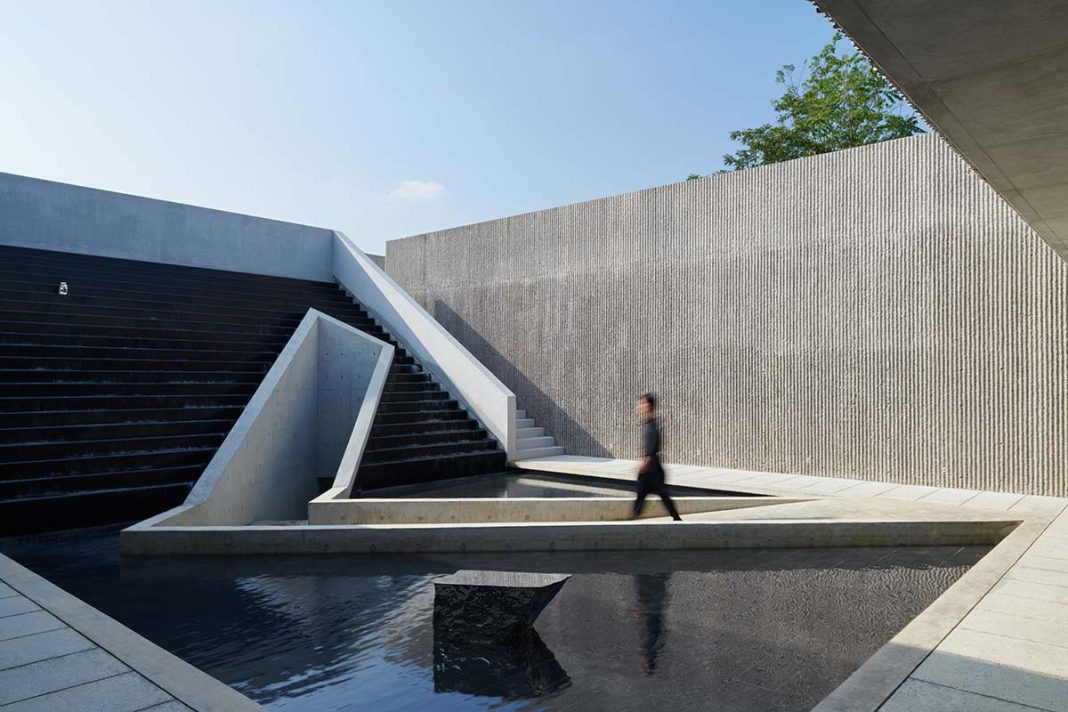DATA SHEET
Client: Pernod Ricard
Architecture & Interior design: Neri&Hu Design and Research Office
Landscape design: YIYU Design
Construction: K&H International, Suzhou Hezhan, Qiían Group
Experience design: BRC Imagination Arts
FF&E design: Design Republic
Furnishings: Carl Hansen, Classicon, De La Espada, Stellar Works, Vitra; custom design
Lighting: Parachilna, Viabizzuno; custom design
Photo credits: Chen Hao
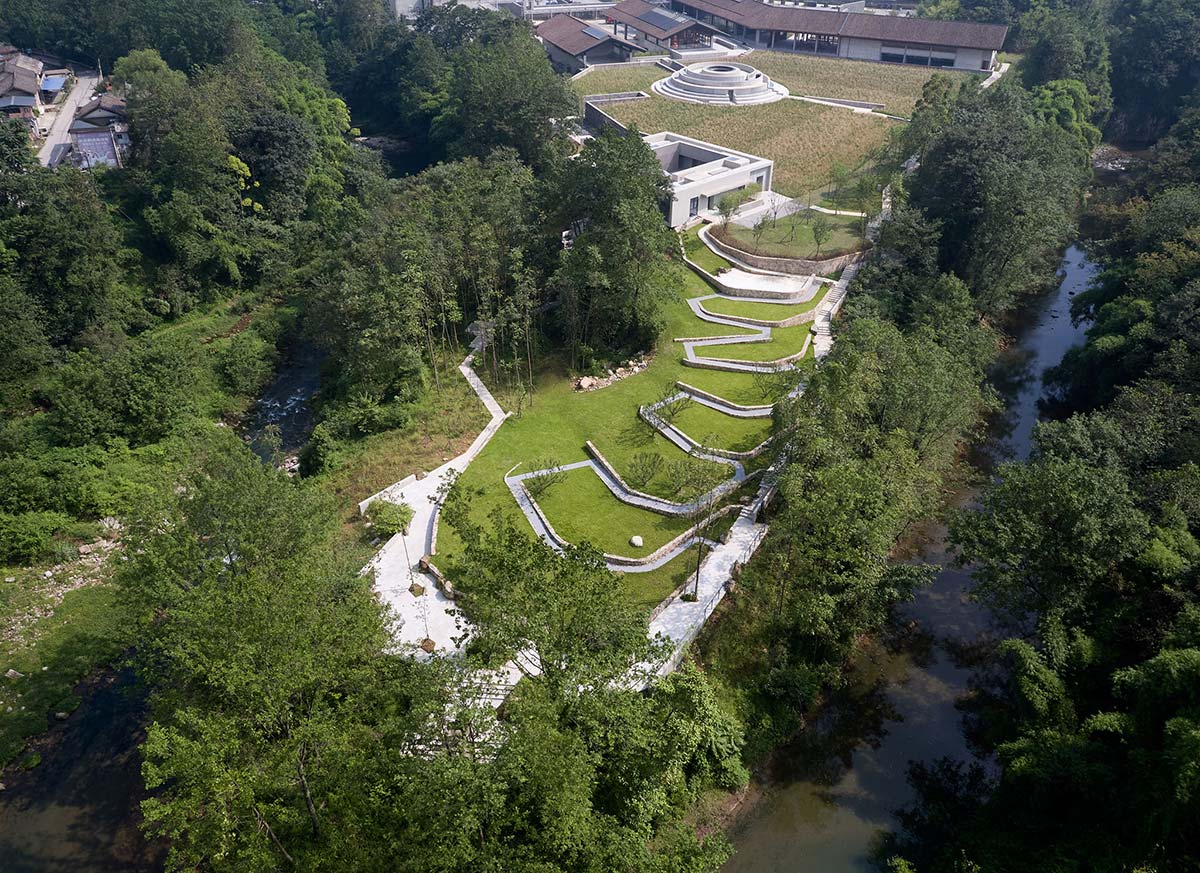
Neri&Hu, a distinguished, multidisciplinary architecture firm headquartered in Shanghai, have recently completed a project that stands on a site among those with the deepest, oldest spirituality in all of China: Mount Emei. The mountain is in the central-western province of Sichuan and is one of the four sacred mountains of the Buddhist tradition. Martial arts in particular were often practiced in its monasteries. This ancient site has been a UNESCO World Heritage Site since 1996. Three years ago, Neri & Hu won the design competition held by the French multinational Pernod Ricard to build its first Chinese whiskey distillery.
“The revered land on which our project stands has a long, rich history,” the architects say. “Over many centuries, this place has been the site of a grand monastery and many historic battles, as well as a stop on pilgrim and trade routes. Although there is no physical remnants of the past, the very landscape powerfully evokes this legendary past. This is why we chose to create a timeless architecture expressing the essential values of a forward-looking company, and the material and cultural heritage it aspires to support.”

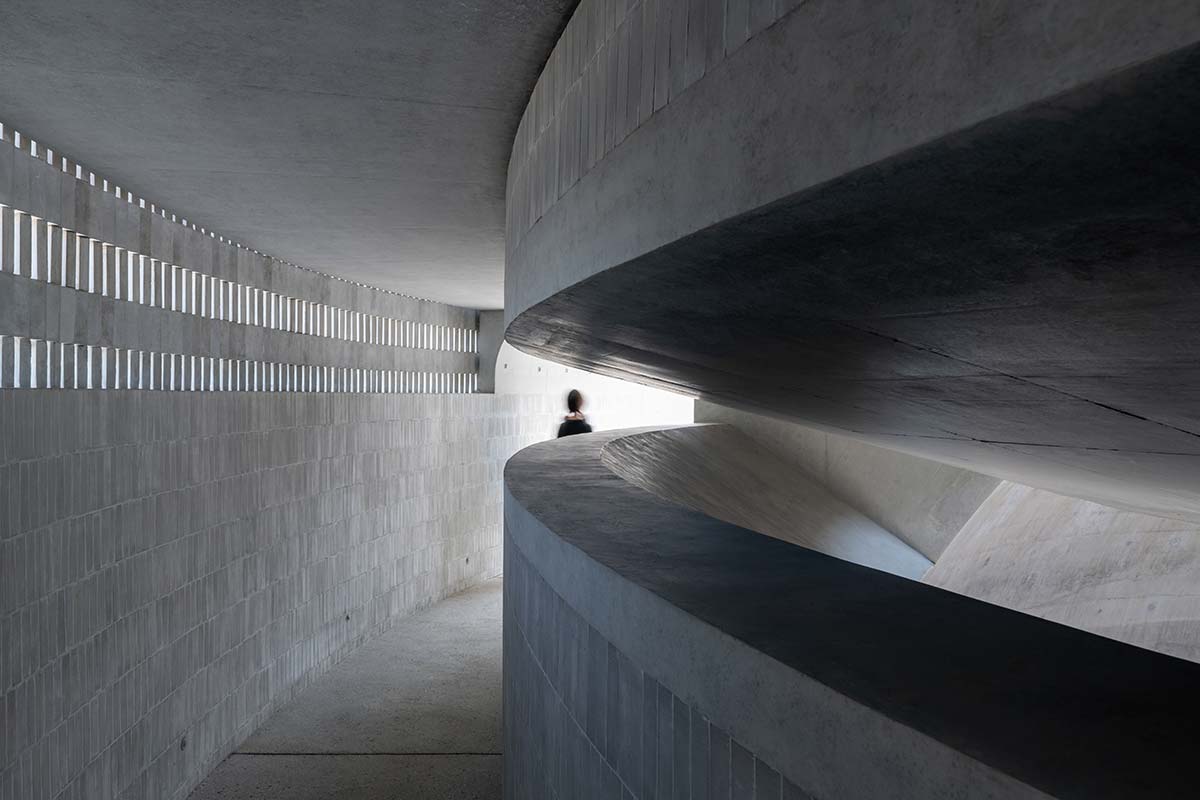
The name of the project, Shan-Shui (literally ‘mountain water’), is a nod to the site’s physical characteristics, which has a stream and is visually dominated by Mount Emei, and it also underscores coexisting opposites (the stability and permanence of the mountain, on one hand, and the fluidity and transformation of water on the other). This complementary quality is a basis for the Chinese concept of harmony and particular style of landscape painting.
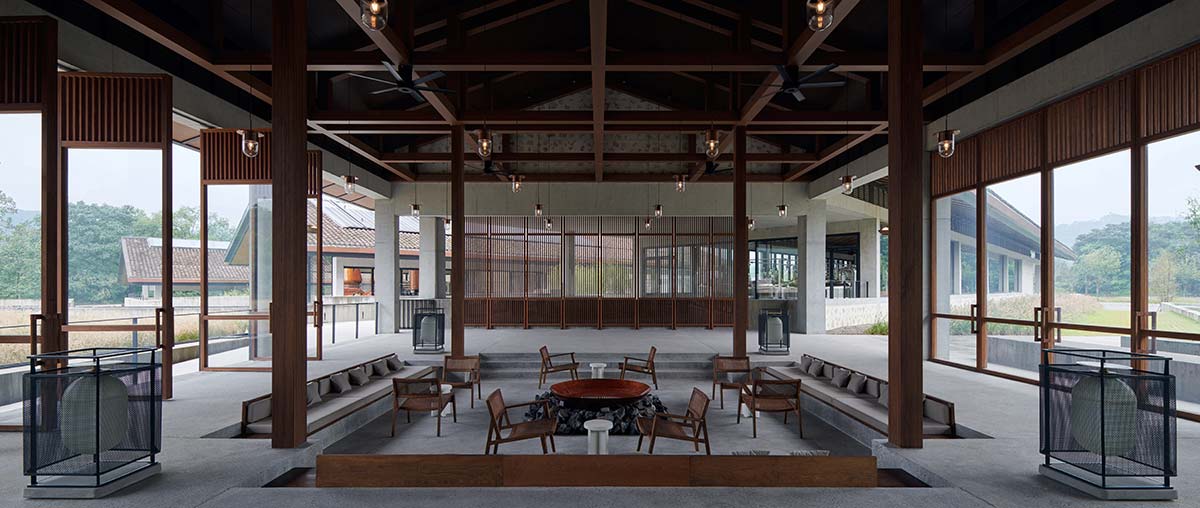
Homage to the Tao is paid in the project’s balanced duality, with space given both to the modern interpretation of the vernacular architecture that informs the industrial part of the complex and the geometric abstraction of the visitor spaces. The production area covers three elongated parallel buildings, arranged along the mountain slope, featuring the coexistence of concrete walls, large windows, and clay-tiled roofs. The two visitor buildings have a sculptural, abstract shape. Here again there is a tribute to the natural elements of the ancient Tao and Feng Shui traditions, using a circle and the square together, symbols of Heaven and Earth, of the Father and of the Mother, respectively.

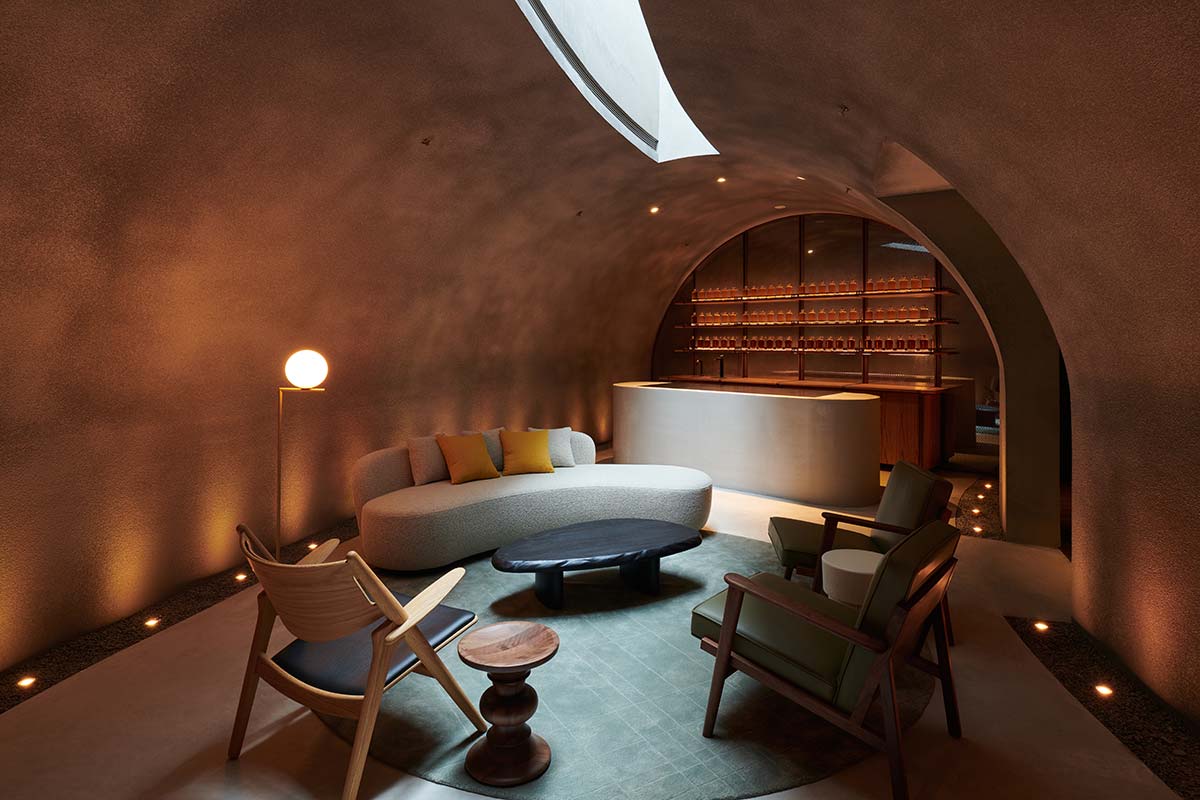
Tastings are done in the round building and the underground section in the project’s center, with a central courtyard covered by a hemispherical dome from whose central oculus a dramatic fountain-waterfall descends, an obvious reference to the Pantheon in Rome. Three rings surround the dome and are made of different textures, emerging from the ground like Mount Emei, becoming a landmark and icon for the entire complex.
These spaces have a deep sacredness and an elegant spareness recalling that of a temple. The building for the café and restaurant is lower and dialogues with the square shape; the perimeter spaces are for rooms and the internal courtyard offers original vantage points on Mount Emei. The extensive gardens are marked by sculptural paths where concrete combines with the presence of water and boulders, reused after being extracted when the ground was leveled before construction.

